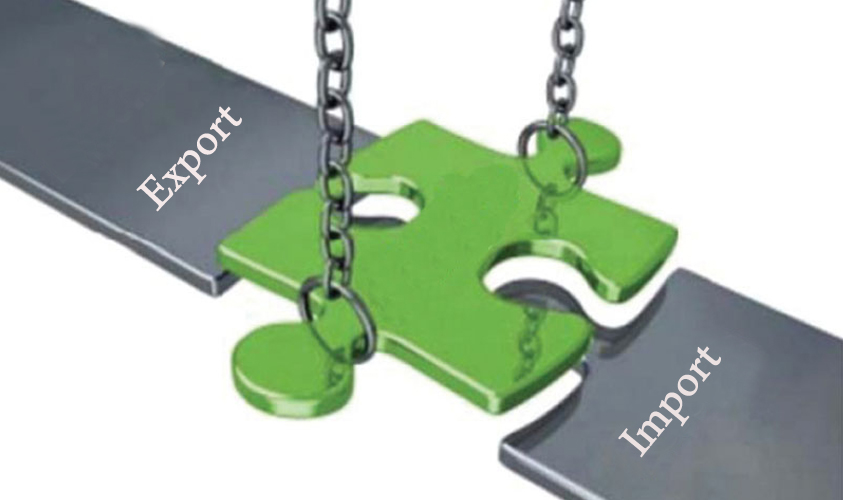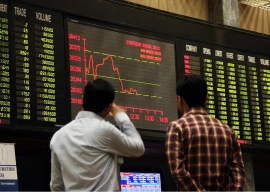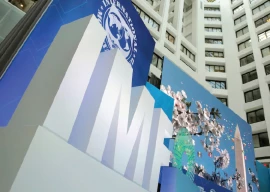
In today's world, the trade deficit is often said to "worsen" if it grows and "improve" if it shrinks. This perspective implies that a country with a trade deficit is overconsuming and living beyond its means. Critics of supply-side policies frequently highlight the trade deficit as a negative consequence, claiming that a persistent trade deficit signals an economy in trouble. However, this belief lacks historical support and reflects a misunderstanding of the underlying dynamics.
To grasp the trade balance, it's essential to recognise the close relationship between a country's capital surplus (ie, capital inflows), its trade deficit, and its terms of trade (often referred to as the real exchange rate). A capital surplus is the difference between what a country invests and what it saves, while the trade deficit is the difference between what a country spends and what it produces. In essence, a country's capital surplus mirrors its trade deficit.
The trade balance isn't just the difference between exports and imports; it's also the gap between what a country produces and what it spends. For a nation, the difference between income and expenditure represents a trade surplus. Income consists of consumption and savings, while expenditure includes consumption and investment. The difference between income and expenditure also reflects the gap between savings and investment, which is essentially the net capital outflow or capital deficit. Conversely, the difference between investment and savings is the net capital inflow or capital surplus. In simple terms, a capital surplus is equivalent to the trade deficit.
A trade deficit may sound alarming, while a capital surplus seems positive, but they are two sides of the same coin. Having investors eager to invest in your country is far better than seeing them withdraw their investments. Capital inflows signal a robust economy. The more prosperous investors are in your country, the larger the capital surplus (or trade deficit).
When a country adopts pro-growth supply-side policiessuch as cutting tax rates, maintaining sound monetary policy, deregulating its economy, or lowering trade barriersthe immediate result is a rise in the after-tax return on domestic assets. Conversely, if a country implements policies that raise taxes, devalue its currency, increase regulations, or hike tariffs, the after-tax return on assets drops, leading to reduced savings, lower capital formation, and declines in output and productivity.
The costs of moving assets across borders affect how much asset prices rise in the tax-cut country, how much after-tax yields increase, and the extent of asset migration into the lower-tax country. The lower the cost of moving assets, the larger the trade deficit/capital surplus and the smaller the increase in asset prices in the tax-cut country. The inflow of assets from abroad represents the trade deficit/capital surplus, and the relative rise in asset prices indicates an improvement in the terms of trade. On the flip side, the outflow of assets from foreign countries leads to a trade surplus/capital deficit in those nations.
The relationship between terms of trade and exchange rates is complex. Foreign investors generate domestic currency for their investments by selling more goods to the domestic country and buying fewer goods from it. For a country to maintain a trade deficit/capital surplus, its domestically produced goods and services must become less competitive internationally. This results in residents buying more from abroad, while foreign buyers purchase less from the domestic economy. This loss of competitiveness is reflected in the rising price of domestic goods relative to foreign goods.
How does this increase in relative prices occur? The rise in domestic prices can result either from the appreciation of the real exchange rate or from higher inflation in the domestic economy compared to the rest of the world. When a country's terms of trade change without a corresponding change in the exchange rate, inflation rates diverge. The difference between currency appreciation and domestic inflation is crucial.
Exchange rate changes without shifts in terms of trade lead to complete offsetting inflation. The devaluing country experiences inflation relative to the revaluing country by the exact amount of the devaluation, known as the Law of One Price. When terms of trade change without corresponding exchange rate adjustments, inflation occurs in the country with rising terms of trade relative to the country with falling terms of trade.
Trading patterns are shaped by the costs associated with trading each product. The lower the trading costs, the more tradable the product. As capital ebbs and flows between nations, so too do the marginal costs tied to trade deficits and surpluses. While the process is intricate, the concept is straightforward: trade deficits represent capital surpluses, and trade surpluses represent capital deficits. Countries with trade surpluses generally have low terms of trade and less attractive investment opportunities.
How can we tell if a trade deficit results from more attractive investment opportunities or excessive domestic spending? The answer lies in the terms of trade. A country's terms of trade reflect the relative prices of its goods versus foreign goods and are captured in the real (inflation-adjusted) exchange rate between two countries. The terms of trade represent a price, while the trade deficit is a quantity. In standard supply and demand analysis, an increase in quantity driven by demand pushes prices higher, while an increase in quantity due to supply pushes prices lower. If a trade deficit is driven by overconsumption, the country's terms of trade should fall. Conversely, if the trade deficit is driven by foreign investment, the terms of trade should rise. Distinguishing between capital-driven and consumption-driven trade deficits is relatively straightforward.
Analysing trade data without understanding the causes of deficits or surpluses leads to false conclusions about an economy's health and the factors behind a trade imbalance. Countries that pursue pro-growth policies will experience "good" trade deficits, alongside a strong currency, capital inflows, economic growth, and rising asset values. Countries with anti-growth policies will face capital outflows, trade surpluses, a weakening currency, poor economic performance, and falling asset values.
THE WRITER IS A PHILANTHROPIST AND AN ECONOMIST BASED IN BELGIUM

1725354252-0/Untitled-design-(5)1725354252-0-405x300.webp)
1732099866-0/adele-(3)1732099866-0-165x106.webp)




1732084432-0/Untitled-design-(63)1732084432-0-270x192.webp)










COMMENTS
Comments are moderated and generally will be posted if they are on-topic and not abusive.
For more information, please see our Comments FAQ